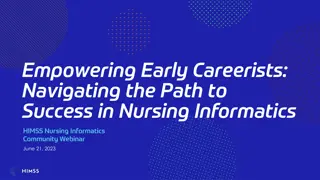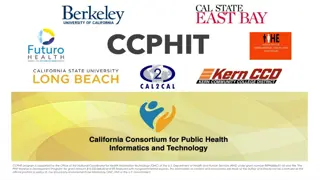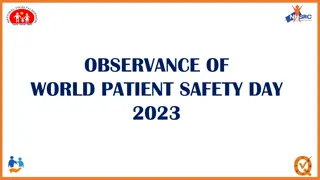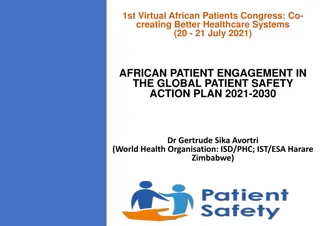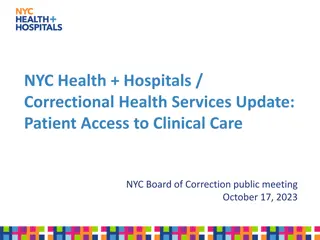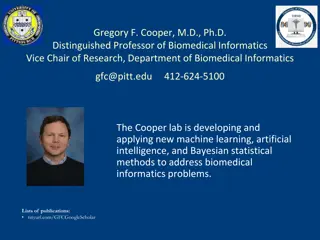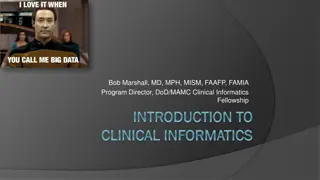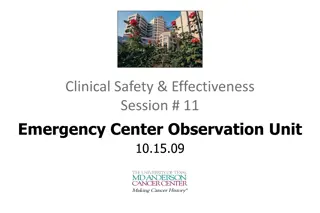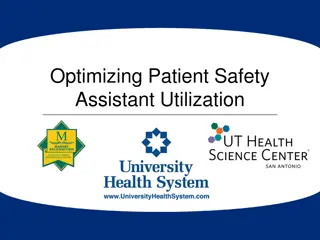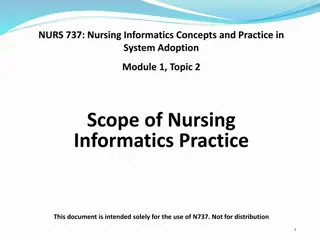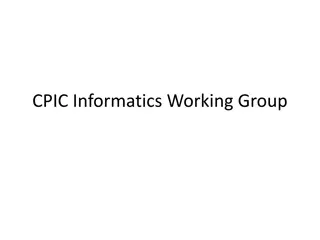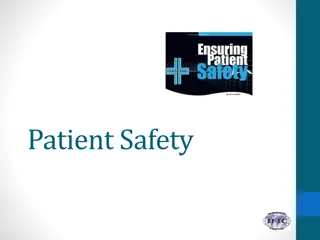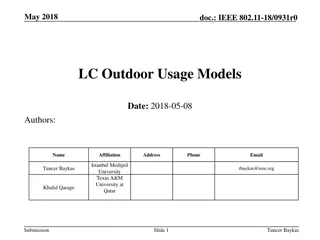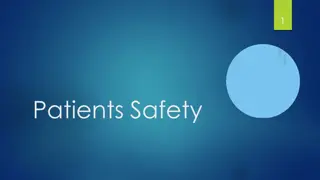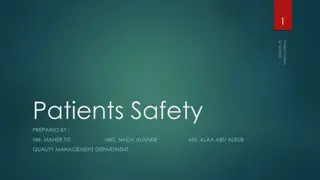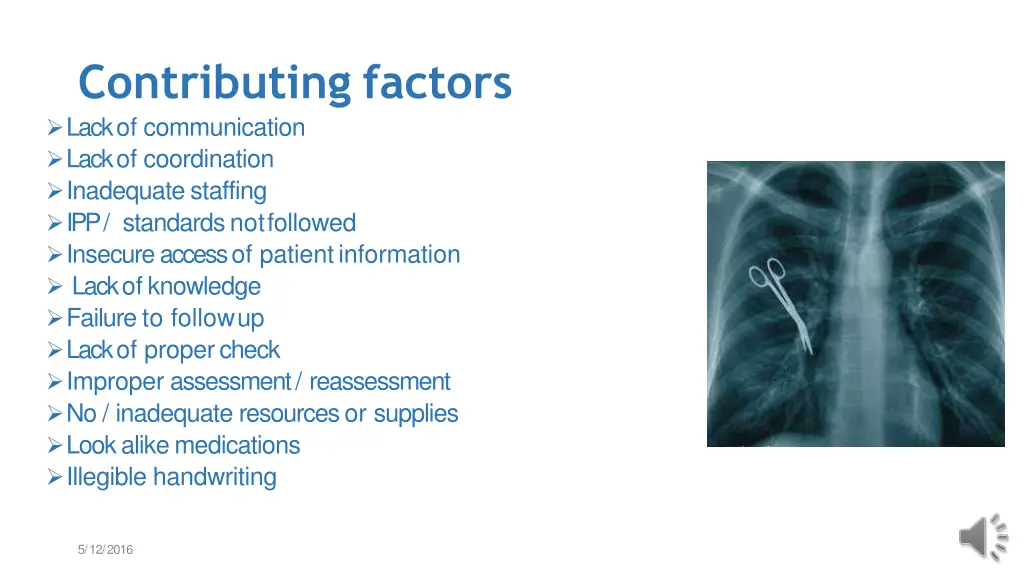
Addressing Contributing Factors and Barriers in Healthcare Informatics Implementation
Explore the contributing factors like lack of communication, inadequate staffing, and more affecting healthcare informatics. Discover the benefits and impacts of Clinical Decision Support (CPOE) system implementation, along with the barriers faced in technology implementation in healthcare settings.
Download Presentation

Please find below an Image/Link to download the presentation.
The content on the website is provided AS IS for your information and personal use only. It may not be sold, licensed, or shared on other websites without obtaining consent from the author. If you encounter any issues during the download, it is possible that the publisher has removed the file from their server.
You are allowed to download the files provided on this website for personal or commercial use, subject to the condition that they are used lawfully. All files are the property of their respective owners.
The content on the website is provided AS IS for your information and personal use only. It may not be sold, licensed, or shared on other websites without obtaining consent from the author.
E N D
Presentation Transcript
Contributing factors Lack of communication Lack of coordination Inadequate staffing IPP / standards not followed Insecure access of patient information Lack of knowledge Failure to follow up Lack of proper check Improper assessment / reassessment No / inadequate resources or supplies Look alike medications Illegible handwriting 5/12/2016
CPOEBenefits 50% of none-intercepted serious MEs rate decreased significantly (Bates et al,1998). 81% reduction of medication errors (Bates et al,1999). Decreased patients LOS (Rothschild,2004). Improves medication reconciliation process ( Vira et al,2006). Improves the prescribers compliance (Cunningham et al ,2008). Decreases mortality rate by 20% per month (Longhurst et al,2010). Improves patients satisfaction (Spalding et al,2011). 5/12/2016
CPOE Impact Facilitates 22 new types of medication errors (Koppel etal, 2005). Lack of information systems compatibility, configuration and usability with end users (Colpaert and Decruyenaere, 2009; Rothschild,2004). A significant increase of mortality rates post CPOE (Han et al,2005). 5/12/2016
Informatics Benefits 1. 2. 3. 4. 5. 6. 7. 8. 9. 10. Integrated caredelivery 11. Support Lean processes toward more efficientworkflows 12. Facilitate productivity measurements andmonitoring 13. Reduce medication errors 14. Shortened length of patients hospitalisation dueto effective enhancement of antimicrobial management. 15. Reinforce clinicians compliance on evidence-based practices. Tracking system Effective communication andcoordination Prompt alerts andnotifications Decision support system Manage data and storeinformation Secured access and defined privileges Protocol guided and standardizedpractices Accessibledocumentations Legible orders, requests, andreports 5/12/2016
Contributing factors Lack of communication Lack of coordination Inadequatestaffing IPP / standards notfollowed Insecure access of patientinformation Lack ofknowledge Failure to followup Lack of propercheck Improper assessment / reassessment No / inadequate resources or supplies Look alikemedications Illegible handwriting 5/12/2016
Barriers to technology implementation Cost(36%) Difficulties in proving quantifiable benefits and ROI(32%) Vendors inability to provide satisfactory products orservices (27%) Lack of standardization with integration and interfaces. (HL7,NAHIT) Level of system evolution needed to meet growing demandon technology advancements People 5/12/2016
Benefits You can t manage what you can t measure! 5/12/2016
What Medical Informatics toolscan? Improvecommunication Make knowledge more readilyaccessible Assist with calculations Perform checks in realtime Assist with monitoring Provide decisionsupport Require key pieces of information (dose,e.g.) 9
The Accenturestudy The Accenture survey asked physicians about the extent to which they used 12 different functions of EMR and HIS such as electronic entry of patient notes, electronic referrals, electronic ordering and prescribing and communicating with other physiciansor patients via secureemail. The results showed that physicians who are routine users of a wider range of healthcare IT functions have a more positive attitude towards the these technologies. On average across all the countries, as physicians start to use more functions the more positivethey are about thebenefits
The Accenturestudy Majority of doctors surveyed believe that healthcareIT does provide some common top benefits,including: better access, quality data for clinical research(70.9%), improved coordination of care (69.1%) reduction in medical errors (66%). average score of 61%, In England, physicians perceived other healthcare IT benefits to include: increased speed of access to health services to patients(55.3 %), reduced number of unnecessary interventions and procedures(52 %).
Table 1: Assessment of Handwritten Prescriptionscompleteness Informationassessed No. of prescription with omission(%) Patient name Hospital no. Sex Age NationalID Diagnosis Genericname Frequency Dose Duration Route ofadministration physician'sname Extension andbleep physician'ssignature Date Clinicname 0 (0.0%) 0 (0.0%) 64 (32.2%) 132 (66.3%) 171 (85.9%) 39 (19.6%) 85 (42.7%) 3 (1.5%) 20 (10.1%) 2 (1.0%) 29 (14.6%) 12 (6.0%) 25 (12.6%) 7 (3.5%) 12 (6.0%) 1 (0.5%) Total of prescriptions were evaluated: 199(100%)
Table 2: Assessment of Handwritten PrescriptionsLegibility No. of prescription(%) PharmacistB PharmacistA 195 (98.0%) 3 (1.5%) 1 (0.5%) 199(100%) 4 (2.0%) Scale* % of average scale 1 2 3 156 (78.4%) 27 (13.6%) 16 (8.0%) 199 (100%) 43 (21.6%) 88.2 7.5 4.3 100% 11.8% Total Total of illegibleand partially illegible! *1= Legible, 2= legible with effort, 3= illegible ^ pharmacist 1= expert ~ pharmacist2= new ! scale of 2 and 3
Example CPOE reduceerrors Potts studied ADE rates in 13,828 medication ordersbefore/after CPOE implementation at Vanderbilt Children sPICU: Potts AL, Barr FE, et al. Pediatrics. 2004 Jan;113(1 Pt1):59-63.
Does CPOE Take MoreTime? Time Spent/Patient Encounter Duplicate Tasks Removed (minutes) Time Spent/Patient Encounter (minutes) 40 35 30 25 20 15 10 40 35 30 25 20 15 10 35.1 36.3 34.2 34.2 Paper CPOE Paper CPOE 5 0 5 0 6.9 6.2 6.2 5.7 Overall WritingTasks Overall Writing Tasks Evidence shows that CPOE adds less than one minute to the time physicians spent writing orders and overall only added 1-2 minutes per patient encounter. As physicians gained experience with the system, the time for orders actually decreased. (Overhage JM, et al J Am Med Informatics Associ 2001;8:361-371)
Healthcare The healthcare industry is different from, other industries. Weare talking about healing and dealing withhuman, NOT a process based, and can t just apply systems and global optimization techniques in the traditional, industrialengineering sense to the healthcareindustry, Health issomething that is very difficult to measure nor to quantify.


